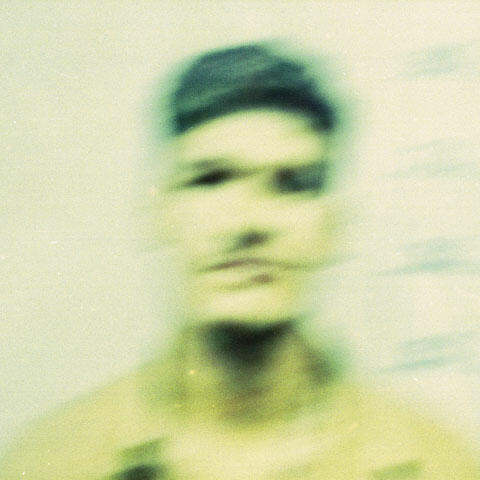Mitos de Fundación (Myths of Foundation)
A joint project from TEOR/éTica Foundation and MUCA Roma
“1999, writes Luis A. Orozco, curator of MUCA Roma, is the year they began their activities these two spaces dedicated to the dissemination and exhibition of young art produced in different contexts, different in their origins, but similar in that they are committed to pilot projects and to some extent peripherals.

MUCA Roma, located in Mexico City, is an inclusive space where the university has opened a window to the production of other young Latin American local scenes. TEOR/éTica Foundation, based in San Jose, Costa Rica, is a space dedicated to promote reflection on the production made by the creators of Central America that on the international scene has been rather famous for its social conflict and politics. His constant work on local initiatives has shaped the construction of platforms for a number of artists and theorists, and has been instrumental in the construction of discourse and a community (creators, consumers, collectors and curators) worried about joining a circuit the art where they had ignored until recent years”. The first of several activities in conjunction with the TEOR/éTica Foundation and MUCA Roma as a sister project , is the exhibition of the Mitos de Fundación (Myths of Foundation), with works by Costa Rican artists, Alberto Hernandez, Priscilla Monge, Joaquín Rodríguez del Paso and Karla Solano.
We reproduce several pieces from the essay of the exhibition, wrote by Jurgen Ureña, curator:
"As proposed by theorist George Steiner, the artistic expressed essentially those transcendental conflicts that are sublimated precisely through the myth… Mitos de Fundación tell us about that continuous feedback between myth and contemporary art. This, through the work of four Costa Rican artists, in their particular and different themes and techniques, but matching its ability to break down some of the naive visions originating on the "Switzerland of Central America”. It is proposed as a first approximation to the destruction of tropical Arcadia. It is also the beginning of an exchange from foundations, common knowledge and demolitions, an experience that is sure to find at the end of this long trip back and forth, generously rewarded."
"The difference between myth and everyday life, between observer and observed and between visible and invisible, is the basis of the photographic series RIP, Police Unfinished Portrait (2011) by José Alberto Hernández, partially shown in this exhibition. Hernandez faces the portrait police from his back and proposes a fuzzy image, indeterminate in its particular features, used to doubt and no longer to identify. From his first photographic series, has developed a work that leads to reflection on the fragility of life and the snares of death... This way, the artist proposes a new reflection on the naive idea of "igualíticos" and offers a Costa Rica view not too different from other Latin American countries, with wealth concentrated in few hands and a polarization of both power and the means of production and that has created a large, invisible, anonymous, fuzzy class permanently exposed to criminal stigma."
"In parallel, Priscilla Monge questioning Costa Rica history as peaceful, white, immaculate and transparent through her works Fuente (2009) and Almohada (2011): an intervention in outer space and an audiovisual presentation on pillows of marble, respectively. The works exhibited in Mitos de fundación, Monge explores the irregularities that living in areas considered safe, placid or aseptic, from the evocation of the blood. In these proposals, the origin of social violence is unknown, but not its symptoms, that are similar, if not identical, as is the case between Costa Rican and Latin American history, despite the myth that strives to deny. Here again, the Costa Rica of idealized lineages clashes with the more immediate everyday life."
"The denial and subjugation of the eye are addressed by Karla Solano works A ciegas (2011) and En la mira (2011): an intervention on the façade of the MUCA Roma building house and a proposal for internal space, where to look, monitor, charge, and seem to deny sides of the same coin. In his latest work, eyes and hands over the eyes of Karla Solano, remember the three wise monkeys of the East and his famous slogan: "no see, no hear, say no." Now, reflecting on the collective body and drift into thinking about social responsibility. In the context, Mitos de fundación, A ciegas and En la mira, remind us of the fragility of the individual when system "recommends" to be prudent in order to not to see, hear, or denounce the grotesque inconsistencies between tropical Arcadia and daily Costa Rica".
"Finally, the work Leg Godt (2010) by Joaquín Rodríguez del Paso, takes us back to pre-Columbian imagery of buildings under the singular appearance of a Chac Mool in the shape of Lego. With Leg Godt, which in Danish means, "play well" - Rodríguez del Paso takes one of his works conceived in 1996, consisting of a series of small sculptures similar. On that occasion, the artist fantasized with the discovery of six figures made of Lego in the form of Chac Mool, in an apocryphal place called Umantla. Rodriguez del Paso thinks on concepts such as authorship, legitimacy and originality, while parodying some extent his own work. As a good interpreter on what we call contemporary art in the social game, he follows and exhibits with ironic gesture some of the strategies that make the creation, the myth of the origins and market system, a unique, single movement, articulated and complex."











